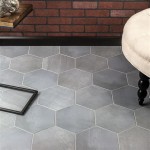Make A Splash With Pool Tiles In Korean Style
The aesthetic of Korean design is steadily gaining international recognition for its minimalist elegance, natural inspiration, and deep cultural roots. Extending this design philosophy to outdoor spaces, specifically swimming pools, offers a unique opportunity to create a tranquil and aesthetically pleasing aquatic environment. Korean-style pool design focuses on harmony, balance, and the integration of the built environment with the surrounding landscape. The selection of pool tiles plays a crucial role in realizing this vision, and careful consideration should be given to the materials, colors, and patterns chosen.
Traditional Korean architecture and design principles are characterized by several key elements. The importance of natural materials, particularly wood, stone, and clay, is paramount. These materials are often used in their raw or minimally processed state to emphasize their inherent beauty and create a connection with nature. Color palettes are generally muted and earthy, drawing inspiration from the natural environment. Whites, creams, grays, and subtle shades of green and blue are commonly used. Clean lines and simple geometric shapes are also prevalent, reflecting a sense of order and balance. Finally, the concept of "Maang," meaning empty space or negative space, is crucial. This principle emphasizes the importance of leaving areas unoccupied to allow for breathing room and to create a sense of tranquility.
Translating these principles to pool design involves a careful selection of materials and a deliberate approach to layout and landscaping. The pool itself should ideally be designed to resemble a natural pond or spring, with soft, organic shapes and a seamless integration with the surrounding garden. The use of natural stone or clay pavers around the pool deck is a common choice, echoing the materials found in traditional Korean homes. Water features, such as small waterfalls or fountains made of natural stone, can further enhance the natural ambiance. The landscaping should be carefully planned to include native Korean plants, such as bamboo, azaleas, and maples, to create a sense of place and to provide shade and privacy. Pool tiles, therefore, become an integral part of achieving this harmonious blend of nature and design.
Selecting the Right Materials for Korean-Style Pool Tiles
The choice of materials for pool tiles is a critical factor in achieving the desired aesthetic and ensuring the longevity of the pool. Several options align well with the principles of Korean design, each with its own unique characteristics and advantages.
Natural stone tiles, such as slate, granite, and travertine, are excellent choices for creating a natural and organic look. These materials offer a wide range of colors and textures, allowing for a high degree of customization. Slate tiles, for example, can provide a dark, dramatic look, while travertine tiles offer a lighter, warmer tone. When selecting natural stone tiles, it is important to choose a type that is resistant to water damage and chemicals, and to ensure that it is properly sealed to prevent staining and fading. The texture of the stone also plays an important role. Choose a textured stone for areas around the pool deck to prevent slipping. For the pool itself, a smoother, more refined stone may be preferable for comfort.
Ceramic and porcelain tiles are another popular option, offering a wide range of colors, patterns, and textures at a more affordable price point than natural stone. These materials are also highly durable and resistant to water damage and chemicals. Porcelain tiles, in particular, are a good choice for pool applications due to their low water absorption rate. When selecting ceramic or porcelain tiles for a Korean-style pool, it is important to choose colors and patterns that align with the overall design aesthetic. Muted, earthy tones and simple geometric patterns are generally the best choices. Consider the use of textured tiles to add visual interest and to provide a non-slip surface.
Glass tiles are also a viable option, especially for creating a visually striking and modern look. These tiles offer a wide range of colors and finishes, including iridescent and shimmering effects. Glass tiles can be used to create intricate patterns or to add a subtle accent to the pool's design. However, it's important to note that glass tiles can be more expensive than ceramic or porcelain tiles, and they may require more specialized installation techniques. When selecting glass tiles, choose a type that is resistant to fading and discoloration, and ensure that it is properly installed to prevent cracking and chipping.
Color and Pattern Considerations for Authentic Korean Design
The color palette for Korean-style pool tiles should be carefully chosen to reflect the natural environment and to create a sense of tranquility and harmony. Muted, earthy tones are generally the best choices, drawing inspiration from the colors of stone, wood, and earth. Whites, creams, grays, and subtle shades of green and blue are commonly used.
White and cream tiles can create a clean, minimalist look, reflecting light and creating a sense of spaciousness. These colors are often used in conjunction with natural stone or wood to create a balanced and harmonious design. Gray tiles can provide a more sophisticated and modern look, while also blending seamlessly with the surrounding landscape. Subtle shades of green and blue can evoke the colors of water and vegetation, creating a connection with nature and enhancing the overall sense of tranquility. When selecting colored tiles, it is important to consider the effect of sunlight on the water. The color of the tiles will be amplified by the water, so it is best to choose colors that are slightly lighter than desired.
Patterns should be simple and understated, reflecting the minimalist aesthetic of Korean design. Geometric patterns, such as squares, rectangles, and triangles, can be used to create a sense of order and balance. Random patterns, using different sizes and shapes of tiles, can also be effective in creating a natural and organic look. Avoid overly ornate or elaborate patterns, as these can detract from the overall sense of tranquility. Instead, focus on creating subtle variations in color and texture to add visual interest without overwhelming the senses. Consider using different shades of the same color to create a subtle gradient effect, or using textured tiles to add depth and dimension to the pool's surface.
Integrating Pool Tiles with Landscaping and Water Features
The integration of pool tiles with the surrounding landscaping and water features is crucial for creating a cohesive and harmonious design. The pool should be seamlessly integrated into the landscape, appearing as a natural extension of the surrounding garden. The selection of pool tiles should complement the colors and textures of the surrounding plants and trees. The use of natural stone or clay pavers around the pool deck can further enhance the natural ambiance, creating a seamless transition between the pool and the garden.
Water features, such as small waterfalls or fountains made of natural stone, can add a sense of movement and sound to the pool area, enhancing the overall sense of tranquility. The tiles used in these water features should be carefully chosen to complement the overall design aesthetic. The use of textured tiles can create a more natural and organic look, while the use of colored tiles can add a subtle accent. Consider using tiles with a slightly different shade or texture to create a visual contrast with the surrounding pool tiles.
The landscaping should be carefully planned to include native Korean plants, such as bamboo, azaleas, and maples. These plants can provide shade and privacy, while also creating a sense of place and enhancing the overall aesthetic. The colors and textures of the plants should be carefully considered in relation to the pool tiles, ensuring that the overall design is harmonious and balanced. Consider using plants with different heights and textures to create visual interest and to add depth and dimension to the landscape. Proper lighting is also crucial for creating a welcoming and inviting atmosphere. Soft, ambient lighting can be used to highlight the pool and the surrounding landscaping, creating a tranquil and relaxing ambiance.
Careful planning and execution are essential for creating a Korean-style pool that is both beautiful and functional. By carefully considering the materials, colors, and patterns of the pool tiles, and by integrating them seamlessly with the surrounding landscaping and water features, it is possible to create a tranquil and aesthetically pleasing aquatic environment that reflects the timeless elegance of Korean design.

Top 10 Pool Tile Trends You Can Visualize Before

Top 10 Pool Tile Trends You Can Visualize Before

Top 10 Pool Tile Trends You Can Visualize Before
20 Pool Tile Ideas To Help Create Your Dream Space

Aquafield Jimjilbang Spa Sauna Experience Hanam Goyang Anseong Korea Kkday
H2ogo Underwater Adventure 11 Sprinkler Pad Costco
H2ogo Under The Sea 10 Splash Pad Costco

Inspire Entertainment Resort Incheon Hotel Reviews Rooms S Hoteles Com

20 Pool Ideas How To Transform Your Backyard Gws Masonry Home Improvement

Book Hotel Sangsang Private Sang Pool Villa In Geoje Si South Korea 2025 Promos
Related Posts








